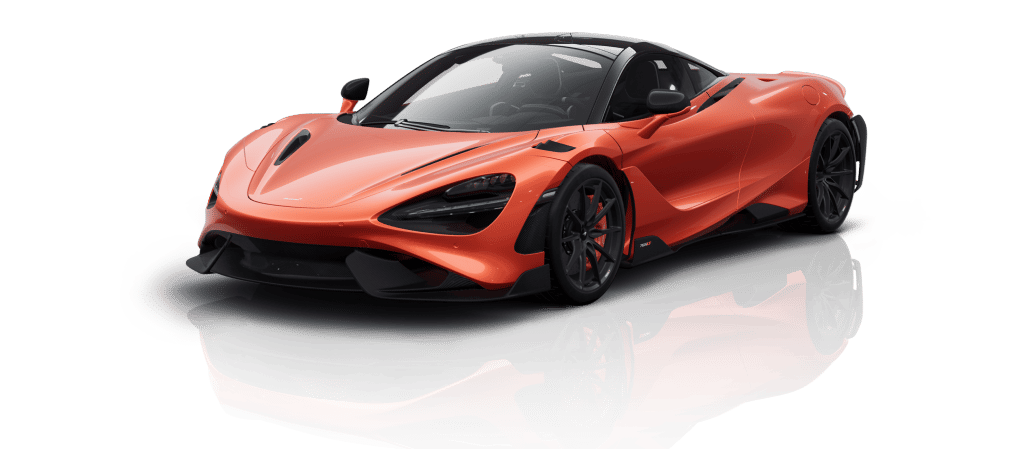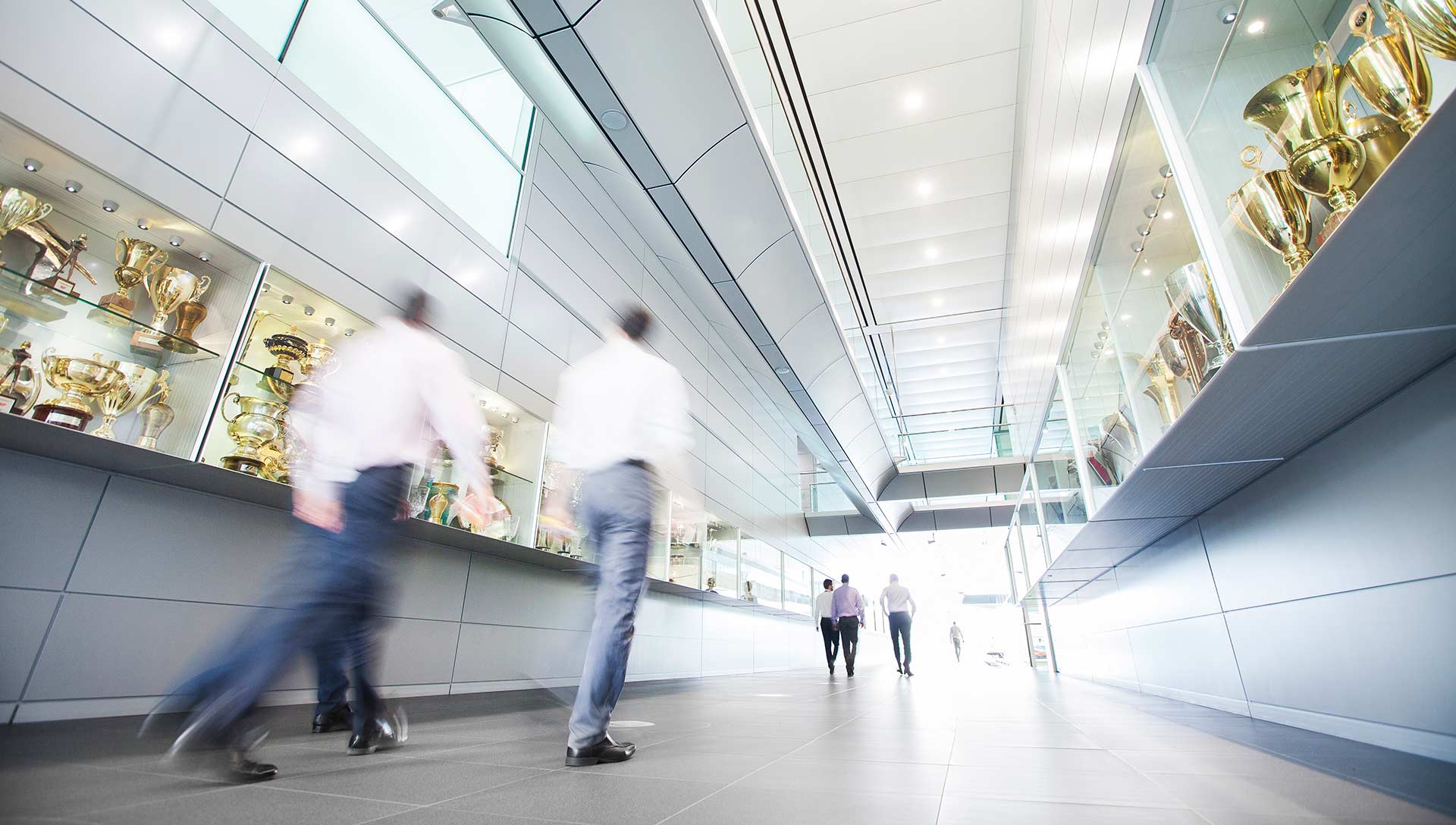
Merging three cars into one: How we created our Triple Crown liveries
Our Monaco Grand Prix and Indianapolis 500 limited edition looks were a year in the making

Three into one doesn’t fit, but that’s what our team of creatives were tasked with in the Triple Crown campaign 12 months ago.
The 1974 Indianapolis 500, the 1984 Monaco Grand Prix and the 1995 24 Hours of Le Mans form McLaren’s Triple Crown. Three historic victories with three iconic liveries. How do you capture the best of them in one livery without creating chaos?
As part of our 60th-anniversary celebrations, the department behind all of our livery designs, Brand Creative, needed to create a vintage look that emphasized the uniqueness and the magnitude of winning motorsport’s three greatest events, an accolade that has only been achieved by one team in the past 100 years.
Under normal circumstances, when creating a limited-edition livery, the team would scour the internet or use books and magazines for sources of inspiration that might spark ideas. With the Triple Crown livery, the inspiration was right there in front of them. They needn’t head to the library, or hit Google Chrome, they could walk along the McLaren Technology Centre Boulevard and see the cars in real life.
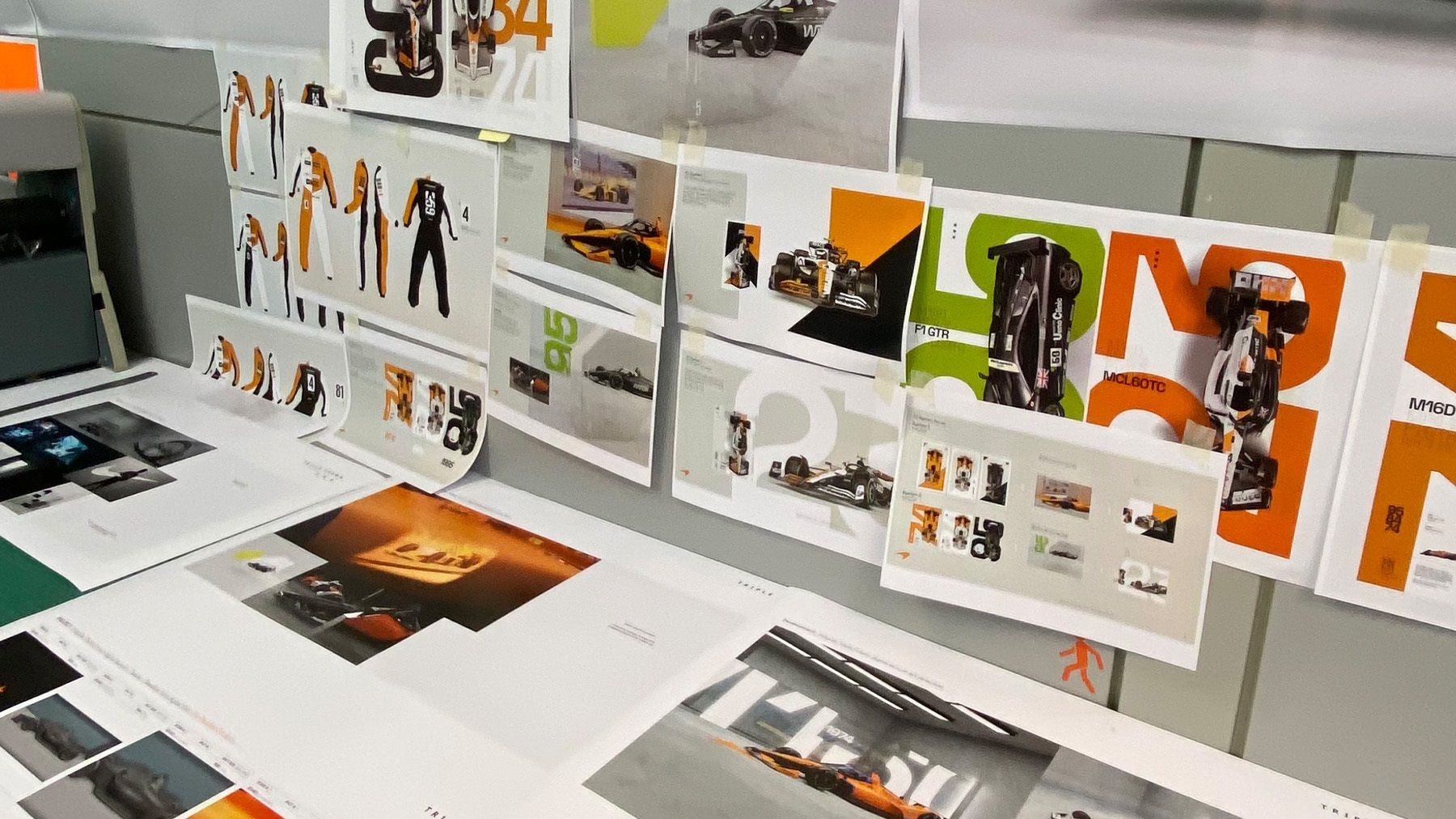
Brand Creative were tasked with combining our three Triple Crown liveries into one for the Monaco Grand Prix and the Indy 500
The challenge was to unpick all three cars, select their favourite sections, and piece them back together into a single livery. Except, puzzles aren’t meant to be mixed and matched. You wouldn’t try and combine the LEGO Technic McLaren Formula 1 car with the LEGO Technic McLaren Senna GTR, would you?
Initially, the team tried to think outside of the box. An early concept was to use either the number 60, or the three numbers from the three race-winning cars as the base of the design. Another was to plaster the cars with photography from the three races.
Other options were brainstormed too, but there was one that they kept coming back to. It sounds like the simplest in theory, but it was arguably the most difficult to execute: combining all three liveries into one.
“We’ve got whole boards of these ideas,” explains Simon Dibley, who led the creation of the Formula 1 livery. “This process began in July 2022, when we first started thinking about McLaren60, and we wanted to run a special livery in Monaco and at the Indy 500. It was then a bit later in the year when we actually started thinking about the designs.
“It starts with several concepts. The best of which are then mocked up flat, developed, applied in 3D and then whittled down until we have a final design. One of the alternative concepts was a harlequin idea, an asymmetrical livery that split down the middle with alternating colours resulting in the car looking different from each angle. In the end, we opted for a simplified version of this comprised of three sections each representing a Triple Crown car. For many reasons, simplicity is king.”
It’s a story of triumph. Of determination. Of perseverance. Of pride.
— McLaren (@McLarenF1) May 23, 2023
This is the McLaren Triple Crown livery.#TripleCrown 👑👑👑 pic.twitter.com/xPQhxDCnQg
Even the release dates on this particular project proved challenging. Arrow McLaren were launching their Indianapolis 500 liveries way earlier than the Formula 1 team, which risked giving the game away if the designs were all similar. This meant coming up with an idea for the Indy 500 cars that clearly linked to the F1 cars but didn’t reveal the Monaco Grand Prix designs.
Unlike in Formula 1, where both cars need to be identical, in the NTT INDYCAR SERIES, the cars need distinguishing features. So, it was decided that each driver would get their own unique Triple Crown livery.
Each of our three regular Arrow McLaren drivers was given a livery modelled on one of the winning cars. The ’95 Le Mans victory inspired Pato O’Ward’s No. 5 Arrow McLaren Chevrolet, Felix Rosenqvist’s No. 6 was a nod to our ’84 Monaco machine, and Alexander Rossi’s No. 7 was modelled on the ’74 Indy 500-winning car.
Our additional fourth entry, 2013 Indy 500 winner Tony Kanaan, ran the number 66, which was a nod to Bruce McLaren’s 1966 24 Hours of Le Mans’ victory. His black and papaya chassis featured a papaya star surrounding the seat and three black stars along the left rear wing, which were nods to our Triple Crown victory.
These designs were then merged into one for the Monaco Grand Prix livery. Once the Indy 500 liveries were unveiled, this left enough intrigue as to how the Formula 1 car would look, given that fans knew they couldn’t all be the same.
That was the first of several hurdles for the team to clear. After all, one doesn’t simply walk into Monaco with whatever livery one likes. There is performance to protect and rules and regulations to abide by. It’s also worth noting that whilst these discussions were going on, the team were simultaneously working on the MCL60 launch, with this all coming together at the back end of 2022.

The harlequin idea was amongst the initial concepts trailed
Simon says: “The harlequin livery would have required a lot of collaboration with the aerodynamics and application teams because of the split down the middle of the design.
“This would have posed some disruption in terms of the aerodynamics and airflow. In particular, the split rear wing would be a difficult area. The design we went with still required a lot of work together, but it wasn’t such a challenge from an aero perspective.”
Throughout the process, Simon worked closely with Andy Towersey, Manager, Composite Assembly & Surface & Brand Technology, to this end, as Andy was playing a vital role in the application of the livery.
“Even small things can affect the aerodynamics of the car,” Andy explains. “The livery needs to be applied in a way that isn’t going to affect the aerodynamics. We won’t jeopardise the performance of the car when developing the livery schemes.
The beauty of this project was the team’s ability to tap into the memories and emotions these cars stir up, but that only works if you do it right. Even something as small as using the wrong shade of papaya or a slightly different logo can significantly impact how the end result comes across.
Behind the livery The design process
The F1 cars were wrapped, whilst the Indy 500 machinery was painted. In some cases, the team found it tricky to source the exact colours, but then they struct gold…
“Colour matching is quite a process,” explains Jay Phillips, who led the creation of the Indy 500 liveries. “We wanted to get that glow in the papaya, which was a challenge both in F1 and INDYCAR.
“In F1, for example, vinyl wrap is very, very thin, as opposed to the very heavy paint that used to be used in F1. This is one of many reasons why the modern interpretation of papaya is a little different from the old-school papaya.”
Simon picks up the conversation: “When we were trying to find a vinyl match for the black of the Le Mans car, there was a lot of trial and error until we got lucky and found an off-the-shelf one that matched. As well as saving us time, this was lighter, cheaper and better for the environment.
“You want to get as close as possible to the original cars, but there will always be some element of this being a modern interpretation. The cars don’t look the same, so the designs cannot be identical. The cars are different shapes and sizes, have different requirements, and must abide by different rules and regulations.”

Painting Alexander Rossi's Indy 500 livery
Due to the shape of the cars, it is impossible to get the lines completely straight – but you can create the illusion that they are. Doing this digitally is one thing, matching it up in real life is another, so being able to see the parts produced and wrapped in person during the process can make this a whole lot easier.
“The key is to have them straight from two angles, which is normally the two sides of the cars,” Jay explains. “Nobody ever really sees the cars from directly above in real life. If you go and look at the cars on our Boulevard from the side, the lines are at a perfect 45-degree angle, but if you look at them from above, they’re wiggly and warped.
“The No. 6 car was particularly tricky. Because of the Arrow shape, it has really straight lines, so getting the rounded shape of the 1984 Monaco Grand Prix car to work took a long time, especially on the 3D models we created. We managed it, though, and I think it looked good.”
Andy adds: “We were quite lucky in that we were able to visit the wind tunnel that we are currently using and see the early concept of these designs on certain parts, and it worked. Back when the team were coming up with this design, we hadn’t seen the car that we would be using in Monaco and Spain, so we weren’t sure whether this design would work, or whether the shape would make it look all out of whack once it was applied.”
Behind the livery The application process
F1 also requires a variety of different parts for different scenarios, not just the ones that are actually bolted onto the cars when they arrive. Changing weather conditions and two vastly different tracks in Monaco and Spain meant a variety of parts would be required. In Monte Carlo, teams often use rear wings specific to that circuit. Any additional parts would also need to be wrapped and ready to go.
“We need all of the options to be ready to go from one session to another,” Andy continues. “In free practice, the team will try different parts out depending on the weather conditions and the temperature. In Monaco, it was meant to be hot, which would have meant a different cooling package was required, but if it turned out to be cold, we’d need to insulate the engine better.
“We need to be able to adapt to conditions. So, we’ll have lots of different parts all prepared.”
There is also space to have a little bit of fun with the cars, and Brand Creative love to hide easter eggs on their limited-edition liveries. Amongst other easter eggs, the Monaco car featured the Union Jack from the 1995 24 Hours of Le Mans winning car and the green dot that signified what class we were competing in.

The Monaco Grand Prix livery in practice
Whilst on Rossi’s No. 7 Indy 500 competitor, his name was written in the same style and font as Johnny Rutherford’s was on the 1974 Indy 500 winner.
These weren’t just placed at random. Each was given a specific location to ensure maximise visibility. The cars also featured easter eggs such as the traditional Speedy Kiwi, the years when the three victories were achieved, and three stars, one for each win.
“We think about onboard cameras a lot, especially in Monaco, when they are frequently used on the TV feed,” Simon explains. “On the F1 cars, we placed the stars and the dates where you could see them nicely on the onboards, and we made sure there was some papaya in the cockpit.”
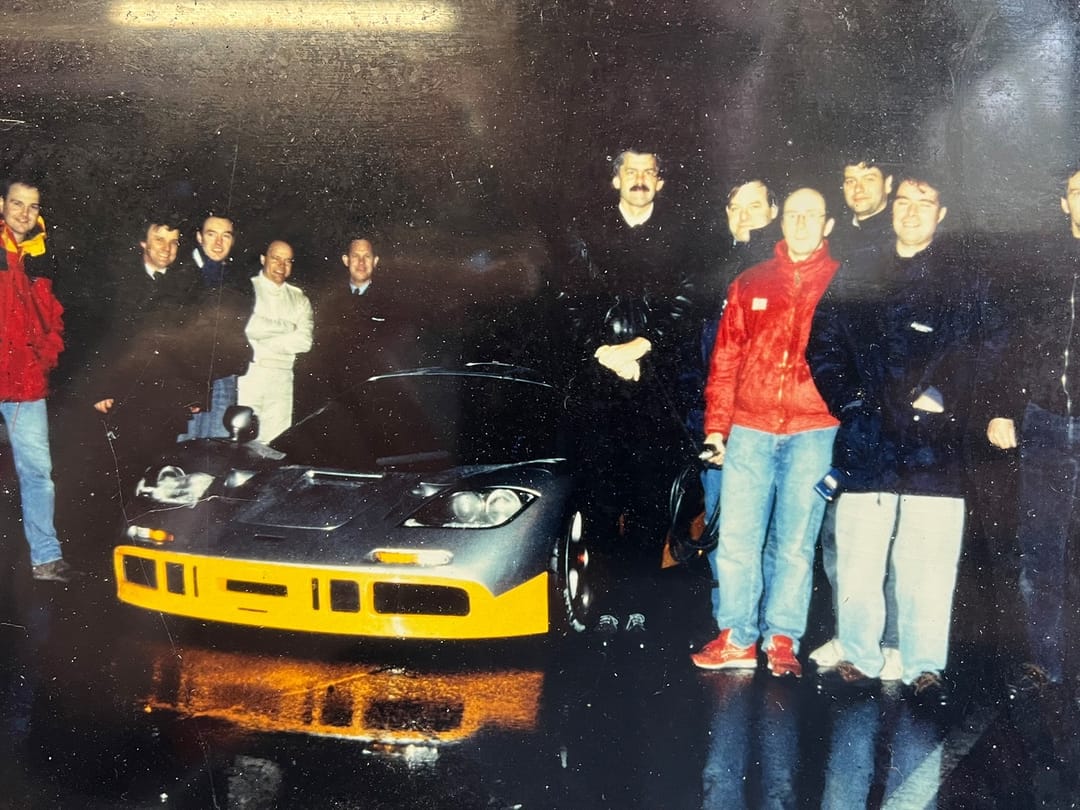

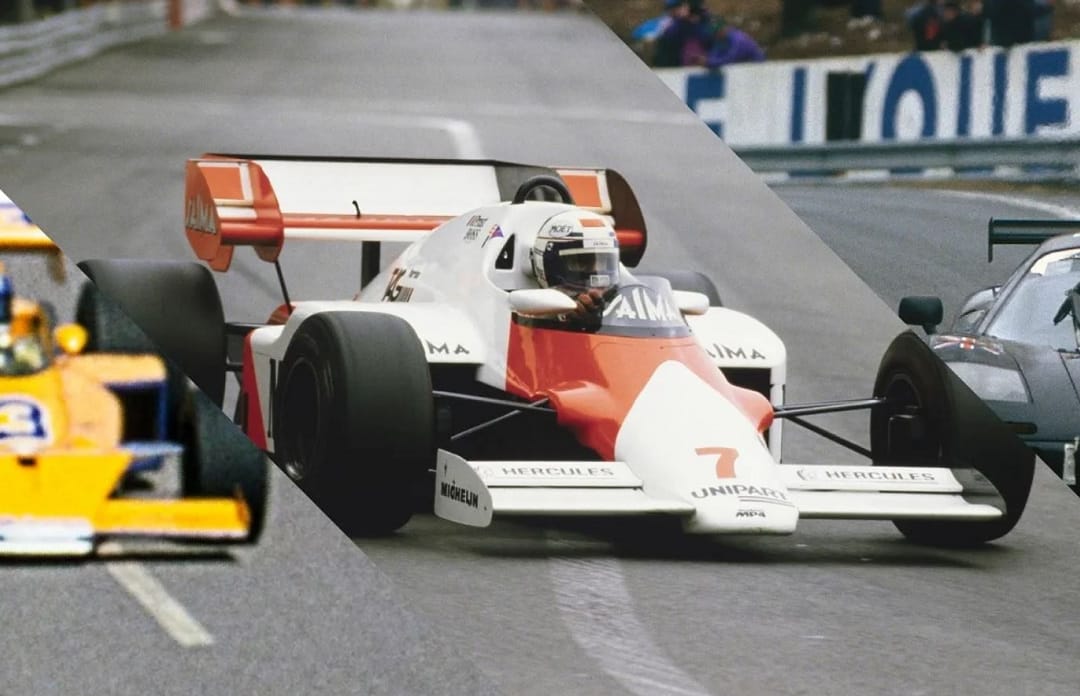

Our legendary Le Mans triumph told by those who lived it
Presented by Arrow Electronics: An oral history of the 1995 24 Hours of Le Mans
Is the Triple Crown the greatest team achievement of all time?
We look at how motorsport’s ultimate accolade stacks up against other sports
What is the Triple Crown?
You’ll see a lot about the Triple Crown over the next two months: here’s why, and what it is
Weird and wonderful facts from the Triple Crown
Your ultimate stat pack for the Indy 500, the 24 Hours of Le Mans and the Monaco GP
Sign up now
McLaren Plus is our free-to-join fan loyalty programme, bringing McLaren fans closer to the team with the most inclusive, rewarding and open-to-all fan programmes in motorsport.
Sign up now, or current members can amend their details in the form below if necessary.

